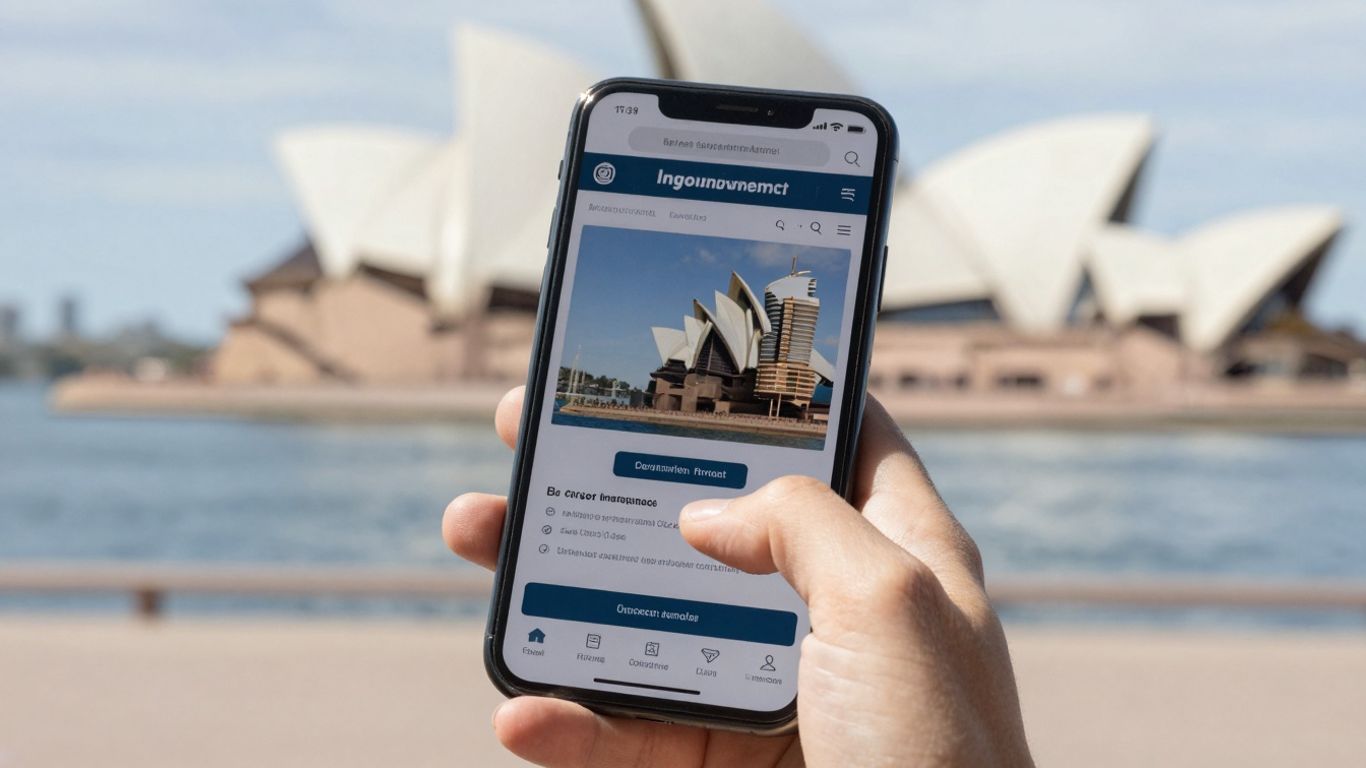Fumbling with finance? You’re not alone – plenty of Aussies grapple with budgeting daily. This blog post aims to make money management less mind-boggling by guiding you in selecting the perfect budgeting and planning software for your needs. We’ll check out the available options, look at their pros and cons, and explain how they could make your finances easier. Fancy finding financial freedom? Keep reading!
Key Takeaways
- Budgeting apps can make managing your money a lot simpler by linking to your bank account and tracking your spending automatically.
- Tools like Frollo and Mint are popular choices in Australia for their all-in-one features.
- Financial planning services can help you set up a personal money plan and guide you on investing.
- Websites like MoneySmart offer heaps of info, calculators, and guides to help you get better with money.
- The best budgeting method is the one that actually works for you, whether it’s an app, a spreadsheet, or something else.
1. Frollo

Frollo is an Aussie budgeting app that’s been making waves. It’s designed to help you get a handle on your finances, and it does this by connecting to your bank accounts and credit cards. This means it can automatically track your spending, which is a huge time-saver. No more manually entering every transaction!
One of the things I like about Frollo is that it’s not just about tracking where your money goes. It also helps you set goals and provides insights into your spending habits. It’s like having a financial coach in your pocket.
Here’s a quick rundown of some of Frollo’s key features:
- Bank Account Integration: Connects to most Australian banks.
- Automated Tracking: Automatically categorises transactions.
- Goal Setting: Helps you set and track financial goals.
- Bill Tracking: Reminds you when bills are due.
I’ve been using Frollo for a few months now, and it’s really helped me see where I was wasting money. I didn’t realise how much I was spending on takeaway coffee until I saw it all laid out in the app. Now I’m making coffee at home more often, and my wallet is thanking me.
Frollo also offers features like budget calculators and the ability to track your net worth. It’s a pretty comprehensive tool, and it’s free to use, which is a big plus. If you’re looking for a way to get your finances in order, Frollo is definitely worth checking out.
2. Mint

Mint is another popular option, especially if you’re already familiar with similar budgeting apps. It’s been around for a while, and lots of people find it easy to use. I remember when I first started trying to get my finances in order, Mint was one of the first apps I tried. It’s pretty straightforward to set up, and it links to most Australian banks and credit unions without too much hassle.
One of the things I like about Mint is that it automatically categorises your spending. So, you can see where your money is going each month without having to manually enter everything. It’s not always perfect, and sometimes you have to tweak the categories, but it saves a lot of time. Plus, it sends you alerts if you’re going over budget in certain areas, which can be a real wake-up call!
- Automatic transaction tracking
- Budgeting and goal setting
- Bill payment reminders
I think the best part about Mint is that it’s free. You don’t have to pay anything to use the basic features, which is great if you’re just starting out and don’t want to commit to a paid subscription. Of course, there are some ads, but they’re not too intrusive.
Mint also offers some investment tracking features, but I haven’t really used those much. I prefer to keep my budgeting and investing separate, but it’s nice to have the option if you want to see everything in one place. For more complex investment needs, something like Sharesight might be better suited, but for basic budgeting, Mint is a solid choice. It’s a good way to create a budget and get a handle on your spending habits. It’s a great starting point for anyone looking to get their finances in order.
3. Raiz Invest
Raiz Invest is all about micro-investing. It’s an app that lets you invest your spare change, which is pretty cool if you’re just starting out. The idea is that you link your bank account, and Raiz rounds up your purchases to the nearest dollar, investing the difference. It’s like saving without really thinking about it, which is perfect for those of us who aren’t exactly financial gurus.
Raiz offers a few different investment portfolios, ranging from conservative to aggressive, so you can choose one that suits your risk tolerance. They invest your money in a mix of ETFs (exchange-traded funds), which are basically baskets of stocks and bonds. This helps to diversify your investments and reduce risk. It’s a pretty simple way to get into the stock market without needing a heap of cash or a finance degree.
Here’s a few things to keep in mind:
- Raiz charges fees. It’s free to download, but they charge a monthly fee once you start investing. Check out their pricing and performance to see if it’s worth it for you.
- Returns aren’t guaranteed. Like any investment, there’s a risk you could lose money. Don’t invest more than you can afford to lose.
- It’s not a get-rich-quick scheme. Micro-investing is a long-term game. Don’t expect to become a millionaire overnight.
Raiz is regulated by ASIC, so your investments are protected. They also use bank-level security to keep your data safe. It’s always good to know your money is in safe hands.
Overall, Raiz is a decent option if you’re looking for an easy way to start investing. It’s not perfect, but it’s a good starting point for beginners. Just remember to do your research and understand the risks before you dive in.
4. Sharesight
Sharesight is a popular tool among Aussie investors, acting as both a share portfolio tracker and a tax reporting assistant. It’s designed to simplify the often-complex task of managing your investments. Sharesight helps you keep tabs on your trades, dividends, and share prices.
It’s particularly useful for getting a real-time view of how your investments are performing, which can help you make smarter decisions. It’s not just about seeing the numbers; it’s about understanding what those numbers mean for your financial future.
Sharesight can be a great way to stay organised, especially if you have multiple investments across different platforms. It brings everything together in one place, making it easier to see the big picture.
Here’s a quick look at some of the things Sharesight can help you with:
- Tracking your investment performance over time.
- Calculating your capital gains tax obligations.
- Generating reports for tax time.
- Monitoring dividend income.
Sharesight offers different subscription plans, so you can choose one that fits your needs and budget. It might be worth checking out if you’re looking for a way to simplify portfolio management and stay on top of your investments.
5. MoneySmart Website
The MoneySmart website, run by ASIC, is a fantastic resource for Aussies looking to get their finances in order. It’s basically a one-stop shop for financial education, offering a bunch of tools and info to help you manage your money better. I reckon it’s a great place to start if you’re feeling a bit lost or just want to brush up on your knowledge. It’s designed to help you make informed decisions about your money.
They’ve got calculators for everything – from working out your mortgage repayments to figuring out how much you need to save for retirement. Plus, they have heaps of articles and guides covering all sorts of topics, like debt management and investing. It’s all presented in a pretty easy-to-understand way, which is a massive bonus.
I’ve found their section on avoiding scams particularly helpful. It’s got some really practical tips on how to spot dodgy deals and protect yourself from getting ripped off. Definitely worth checking out, especially with all the scams going around these days.
Here’s a few things you can find on the MoneySmart website:
- Budgeting tools to track your spending.
- Information on superannuation.
- Tips for buying a home.
- Guidance on managing debt.
- Advice on investing.
It’s a really comprehensive site, and best of all, it’s free! So, if you’re serious about getting on top of your finances, give the MoneySmart website a look. You might be surprised at what you learn. They also have a bunch of money calculators to help you plan.
6. Barefoot Investor
The Barefoot Investor isn’t software, but a popular financial guide by Scott Pape. It’s more of a philosophy and a set of steps to get your finances in order. Think of it as a DIY budgeting and planning system. It’s super popular in Australia, and heaps of people swear by it.
The core idea is to simplify your finances into manageable buckets. It’s all about automating your savings and investments, so you don’t even have to think about it too much. It’s a pretty hands-on approach, but it can be really effective if you’re willing to put in the effort upfront.
Here’s what the Barefoot Investor method generally involves:
- Setting up multiple bank accounts: This includes a ‘Mojo’ account for emergencies, a ‘Daily Expenses’ account, and a ‘Fire Extinguisher’ account for debt repayment.
- Automating your savings: This means setting up direct debits to move money into your savings and investment accounts automatically.
- Investing in low-cost index funds: The book recommends specific investment strategies for long-term wealth building.
The Barefoot Investor method is all about taking control of your money and building a secure financial future. It’s not a quick fix, but a long-term plan that requires discipline and commitment.
It’s a great option if you prefer a more hands-on, structured approach to budgeting and planning. You can use the Barefoot Investor method alongside other budgeting apps for tracking expenses.
7. MMS Money Buddy
Ever felt like you’re just throwing money into a black hole? It’s a common feeling, especially with all the bills and expenses piling up. Sometimes, you just need a bit of guidance to sort things out. That’s where MMS Money Buddy comes in.
MMS Money Buddy aims to connect you with the right financial advisor to simplify your financial journey.
Think of it as a friendly chat to get you started on the right track. They help you figure out what you need and then match you with someone who can actually help. It’s like having a mate who knows a lot about money and is willing to point you in the right direction. According to an Australian Securities and Investments Commission (ASIC) report, a significant portion of Aussies are looking for financial advice rather than going it alone, so you’re definitely not the only one!
Here’s how it works:
- You start with a quick chat about your money situation.
- They match you with a licenced financial advisor who suits your needs.
- You get a clear plan to help you reach your financial goals.
It’s all about taking that first step towards getting your finances sorted without feeling overwhelmed. It’s about getting a handle on your money matters and understanding where to start.
It’s a pretty straightforward way to get some professional help without the usual stress. Plus, it’s good to know you’re not alone in wanting to get your finances in order. There are many money-saving tips available to help you get started.
8. ASIC
ASIC, or the Australian Securities & Investments Commission, might not be budgeting software in the traditional sense, but it’s a seriously important resource for all Aussies looking to get their finances in order. Think of them as the financial watchdog, making sure everyone plays fair.
ASIC’s MoneySmart website is a treasure trove of free, unbiased info and tools. It’s not flashy, but it’s packed with practical stuff you can actually use.
ASIC provides educational resources and tools to help Australians make informed financial decisions. It’s a great place to start if you’re feeling lost or overwhelmed by all the budgeting and investing advice out there.
Here’s what you can find on the MoneySmart website:
- Calculators: From mortgage calculators to superannuation planners, they’ve got tools to help you crunch the numbers.
- Guides: Covering everything from buying a car to understanding credit, these guides break down complex topics into easy-to-understand language.
- Tips and Tricks: Practical advice on saving money, reducing debt, and investing wisely.
While ASIC doesn’t offer personalised financial advice, it does provide the resources you need to make smart choices. It’s a great place to learn about super fund details, and other important financial topics. It’s definitely worth checking out if you’re serious about getting your finances sorted.
Wrapping it Up: Your Money, Your Rules
So, there you have it. Picking the right budgeting software for us Aussies isn’t about finding some magic bullet. It’s more about figuring out what works for you. Do you like seeing everything laid out, or just the basics? Are you a bit of a tech-head, or do you prefer something simple? There are heaps of options out there, from free apps to ones with a small fee. The main thing is to just get started. Even a little bit of planning can make a big difference to your wallet. Give one a go, see how it feels, and you might just surprise yourself with how much you can save. Good luck!
Frequently Asked Questions
What’s the big deal with budgeting apps?
Budgeting apps are super handy because they help you keep track of your money. They can link up with your bank account and show you where your cash is going. Some even help you set limits so you don’t overspend. Think of them as your personal money coach in your pocket!
Can I compare my planned budget with my actual spending?
Absolutely! Many budgeting apps and online tools let you set up a monthly budget. Then, as you spend and earn, the app shows you how you’re doing compared to your plan. This helps you see if you’re sticking to your goals or if you need to adjust things.
Are budgeting apps safe to use?
Yes, they are generally very safe. These apps use strong security like encryption to protect your financial details. It’s always a good idea to check the app’s security info and maybe even chat with your bank if you’re worried before sharing any private stuff.
Do I have to pay for a good budgeting app?
There are heaps of free options that do a great job, especially if you’re just starting out. Some paid apps offer extra cool features like investment tracking, but for basic budgeting, free ones often do the trick. It really depends on what you need!
What’s a budget planner and why do I need one?
A budget planner is like a map for your money. It shows you how much you earn and how much you spend on things like rent, food, and fun. By looking at your real income and expenses, you can make smart choices about where your money goes.
Can setting savings goals really help me save more?
For sure! Having clear goals, like saving for a holiday or a new car, can really motivate you. When you know what you’re saving for, it’s easier to stick to your budget and watch your money grow.





